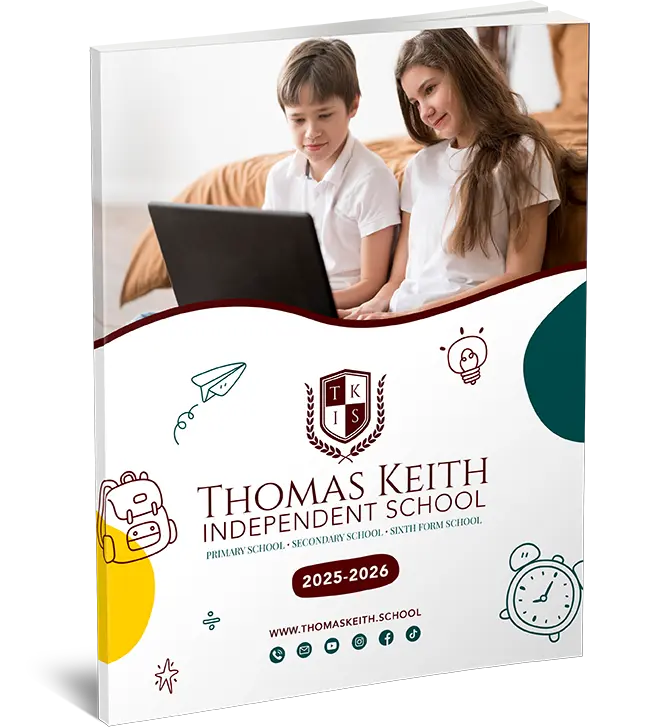
Year 1 Grammar Objectives
Crucial SPaG and Year 1 Grammar Objectives for a Solid Basis
Early schooling is essential for a child’s development of fundamental linguistic abilities. The goals of SPaG (Spelling, Punctuation, and Grammar) and Year 1 grammar are crucial in assisting young students in acquiring effective oral and written communication abilities. Gaining mastery of these abilities gives students a starting point for future academic success.
A well-designed program, like the one provided by Thomas Keith Online Independent School, can help students accomplish these goals and put them on the right track for academic success. This post will discuss the fundamentals of Year 1 grammar and SPaG objectives in British English, providing parents and teachers with advice, examples, and insights.
Goals for Year 1 Grammar
Recognising Verbs, Adjectives, and Nouns
Children in Year 1 start to comprehend the fundamental sentence constructions. First, they recognise and make use of:
Nouns: Identifying objects, persons, and locations (e.g., “cat,” “school,” “friend”).
Verbs: Knowing how to use action words like “run,” “play,” and “sing”
Learning adjectives that give more information, such as “blue,” “happy,” and “tall.”
By practising these ideas, kids learn sentence construction and how words work together to express meaning.
Structure of Sentences and Word Order
Young students are taught the value of sentence structure and word order. Teachers teach their children to use simple phrases like “The cat sat on the mat” that have the proper subject-verb-object order. Through supervised exercises, kids discover that sentence meaning is influenced by word order.
Employing Conjunctions
Along with this, students learn how to connect concepts or elements in sentences using simple conjunctions like “and” For instance, the phrase “I have a ball and a bat” is frequently used to introduce conjunctions. Students who grasp these words can connect related ideas and construct longer sentences.
A Brief Introduction to Pronouns
Although they aren’t often specifically needed in Year 1, some schools, including Thomas Keith Online Independent School, use simple pronouns to help pupils become used to swapping out nouns in sentences. “Sally is running,” for instance, may be changed to “She is running.”

First-Year SPaG Goals
Skills in Spelling
High-frequency words used in daily communication are the focus of year one pupils’ work. They also learn how to:
Use their phonetic spelling skills to write words as they hear them, using their understanding of sounds.
Know how to spell and identify common exception words that defy phonetic conventions, like “the,” “said,” and “come.”
Confidence in writing and reading fluency are enhanced by consistent practice with these spelling targets.
Question marks, full stops, and capital letters
At a basic level, punctuation is introduced, beginning with capital letters for names and sentences. When a sentence ends, full stops (periods) are taught, and when a sentence poses a question, question marks are added. Even in simple phrases, children learn that punctuation can help to make meaning clear.
Singular and Plural Noun Formation
Pupils are taught both singular and plural forms, emphasizing the use of “-s” or “-es” to signify more than one noun (for example, “cat” to “cats” or “box” to “boxes”). This idea is strengthened by activities that help kids identify and create plurals.
Employing Suffixes and Prefixes
Year 1 pupils frequently start with a simple understanding of “un-” to produce opposite meanings, such as “happy” and becoming “unhappy,” even if more complex grammatical concepts like prefixes and suffixes may be presented in subsequent years. They can be better prepared for future word creations that are more complicated if they comprehend these basic components.
![]()
Supplementary Materials and Tasks
Interactive Educational Resources
The following resources are available from Thomas Keith Online Independent School to assist in meeting the Year 1 grammar and SPaG objectives:
Games that require players to construct phrases or match words to their functions are known as interactive games.
Students can use flashcards to identify phonetic patterns and high-frequency words.
Simple stories that help kids recognise nouns, verbs, and punctuation are one example of story-based learning.
Useful Activities
Active application of grammar rules is encouraged in children through practical exercises like sentence-building challenges. As part of one activity, kids might arrange word cards to make sentences and figure out which punctuation mark is required. These kinds of practical exercises help with comprehension and retention.
Illustrations from the Method of Thomas Keith Online Independent School
These goals are integrated by Thomas Keith Online Independent School through a well-organized and engaging curriculum that prioritizes the usage of:
Daily exercises to strengthen phonetic spelling and high-frequency words constitute routine practice.
Storytelling sessions: This helps with context-based learning by encouraging students to recognise grammatical elements in well-known stories.
Activities that foster grammar proficiency and teamwork by having kids construct sentences, recognise punctuation, and employ conjunctions in pairs or groups are known as collaborative learning.
Key Advantages of Mastering SPAG Objectives and Year 1 Grammar
Improved Reading Comprehension: Children read more smoothly and comprehend what they read when they understand sentence structure and punctuation.
Better Writing Skills: Students can communicate more effectively in writing as their spelling and grammar confidence increases.
More Self-Assurance: Children who grasp grammar early on are better equipped to take on new learning challenges with assurance.
Easy Transition to Advanced Grammar: Students are better equipped for increasingly challenging language problems in later years when they have a strong foundation in Year 1 grammar and SPaG.
In conclusion,
Establishing a solid foundation in language skills requires meeting the SPaG objectives and Year 1 grammar. Students learn sentence structures, punctuation, and fundamental word forms through organized learning methods and interesting exercises. Children can achieve these goals in a nurturing and engaging atmosphere at schools like Thomas Keith Online Independent School, preparing them for future academic achievement.
![]()
FAQs, frequently asked questions,
1. What goals does SPaG have?
The acronym for spelling, punctuation, and grammar is SPaG. The goals of Year 1 SPaG include learning how to spell high-frequency words correctly, comprehending basic punctuation, and identifying nouns and verbs, among other basic grammar components.
2. Why are the grammatical goals for Year 1 important?
Year 1 grammar objectives give kids the groundwork for reading, writing, and efficient communication by assisting them in developing fundamental language skills.
3. How can parents help their first-graders with their grammatical lessons at home?
Using flashcards to repeat high-frequency words, reading aloud to their kids, and encouraging them to write simple phrases are all ways that parents may help their kids learn.
4. What kinds of exercises assist kids in achieving the SPaG goals for Year 1?
Grammar and SPaG instruction can be made enjoyable and interesting for young children through activities like storytelling sessions, interactive spelling applications, and sentence-building games.
5. In what ways does Thomas Keith Online Independent School assist with the grammar and SPaG goals of Year 1?
In an organized, entertaining manner, Thomas Keith Online Independent School helps students meet Year 1 grammar and SPaG objectives through interactive games, flashcards, narrative, and group projects.







